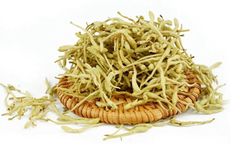

Jin Yin Hua (金银花) refers to the dried flower buds of the plant Lonicera japonica Thunb. (忍冬), also known as honeysuckle. It is also called Jin Hua (金花), Yin Hua (银花), Shuang Hua (双花), Er Hua (二花), and Ren Dong Hua (忍冬花). The flower buds contain flavonoids, including luteolin and luteolin-7-O-glucoside, as well as inositol, chlorogenic acid, isochlorogenic acid, saponins, and volatile oils. Since the 1980s, systematic research has been conducted on its biological characteristics, pruning techniques, optimal harvesting times, pest control, processing and drying, and standardized cultivation, leading to significant improvements in both the yield and quality of Jin Yin Hua. Future research will focus on stabilizing and ensuring the quality of Jin Yin Hua and improving traditional processing methods.
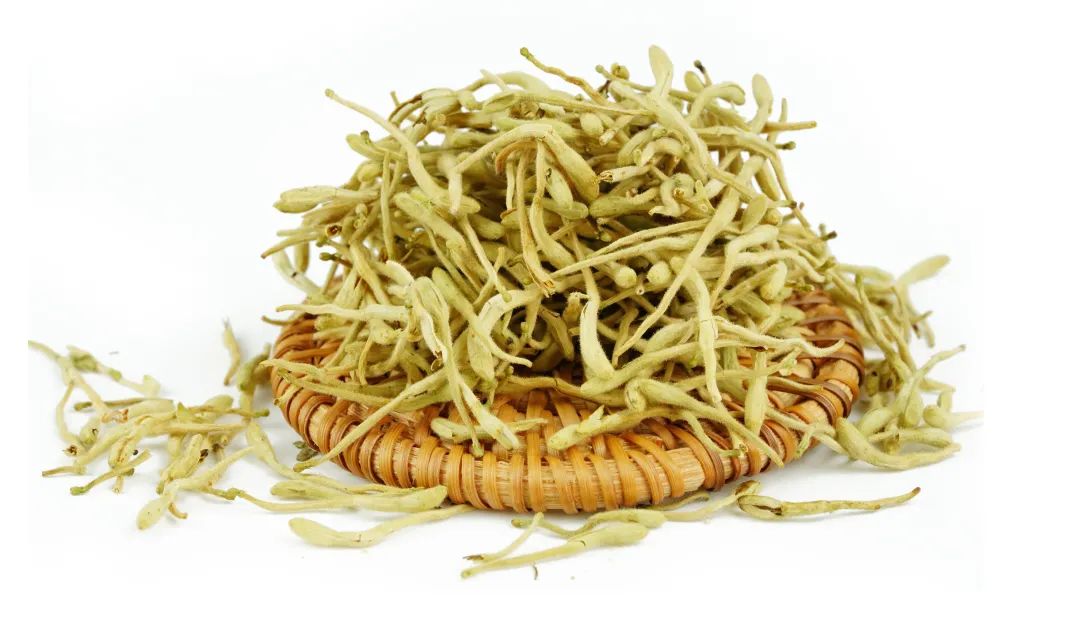

Properties and Channels:
Taste: Sweet; Nature: Cold; Channels: Lung (肺), Heart (心), Stomach (胃).
Functions and Indications:
Clears heat and detoxifies, disperses wind-heat.
Clinical Applications:
Used for carbuncles, sore throat, erysipelas, heat-toxicity dysentery, wind-heat colds, and febrile diseases.
Dosage:
3-10g.
Precautions:
1. Avoid excessive dosage.
2. Contraindicated during menstruation.
3. Use with caution in patients with spleen and stomach deficiency and cold.
4. Jin Yin Hua should not be consumed cold.
5. Long-term use is not recommended for hepatitis B patients.
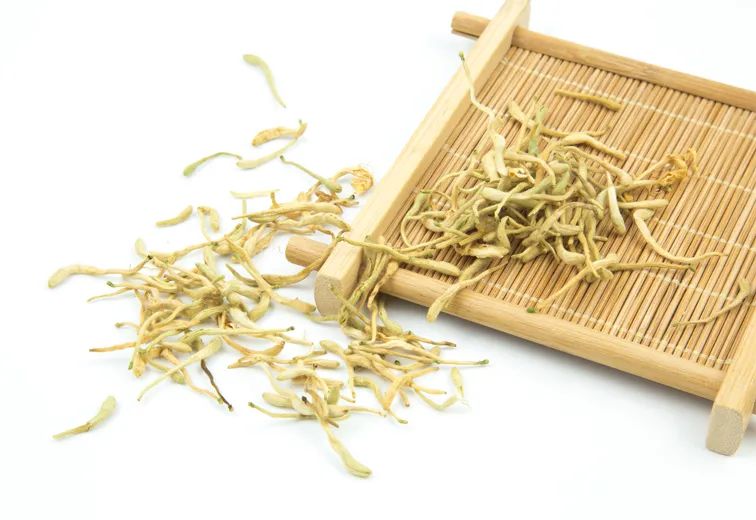

Jin Yin Hua is primarily produced in provinces such as Henan, Shandong, and Hebei. The variety from Shandong (Pingyi, Feixian, etc.) is called “Dong Yin Hua” (东银花); the variety from Henan (Mixian, Fengqiu) is called “Nan Yin Hua” (南银花). The cultivation of Jin Yin Hua in Julu County, Hebei Province, began in the Ming Dynasty, with a history of over 400 years. Large-scale cultivation started in 1973, and after 2003, it developed rapidly, with the planting area reaching 100,000 mu.

Ren Dong (忍冬) is a perennial semi-evergreen climbing shrub or upright small shrub. The vine can grow 1-2 meters long, with thin hollow stems that branch profusely. Young branches are green and densely covered with soft hairs, with an annual growth rate of over 2 meters. Old branches lose their hairs. The leaves are opposite, without stipules, with short petioles measuring 2-7mm, and are hairy. The leaf blades are papery, broadly lanceolate, oblong, or ovate, measuring 2.5-6.0cm in length and 1.5-3.0cm in width; the apex is acute or gradually pointed, and the base is rounded or nearly heart-shaped; the margins are entire and densely covered with long hairs; the upper surface is dark green, while the underside is light green; young leaves are hairy on both sides, while older leaves are hairless or only have hairs on the main veins; the venation is reticulate, with 4-6 pairs of lateral veins. Flowers are borne in pairs in the axils, with peduncles measuring 4-7mm long; there is one pair of bracts that are leaf-like, ovate or broadly ovate, densely covered with soft hairs and glandular hairs, and the small bracts are only 1/3 to 1/2 the length of the ovary; the calyx is 5-lobed and densely covered with soft hairs, persistent; the corolla is tubular and covered with short soft hairs; the flowers are white when first opened, turning yellow later, with a pleasant fragrance; the corolla is lip-shaped, elongated, and bilaterally symmetrical, with the upper lip having 4 shallow lobes and the lower lip not lobed, curling back; there are 5 stamens, with filaments long and exceeding the corolla, covered with numerous pollen; the ovary is inferior, with 2 chambers, each containing several seeds; the style is single, with a capitate stigma, and during flowering, it extends above the entire corolla. The bark is brownish-gray, membranous, and peels off in long strips. The fruit is a berry, small and spherical, borne in pairs, with a diameter of about 6mm; it is green when young and turns purple-black and shiny when mature, containing 2-12 seeds and purple-black juice; flowering occurs from May to August, and fruiting from July to October.


Ren Dong is tolerant of poor soil and does not have strict soil requirements. It can grow in loamy, clayey, sandy loam, and saline-alkali soils. However, it prefers fertile, loose, deep, and relatively fertile sandy loam for optimal growth. Planting in sandy soil can increase ground cover and serve to prevent wind erosion. For saline-alkali soil, planting is best done during the high-temperature and rainy season of July to August for better survival rates. Ren Dong is relatively drought-resistant and prefers a warm and humid environment, commonly found growing in shady, moist slopes and along riverbanks. In suitable soil moisture conditions, it grows vigorously and yields high. Ren Dong prefers sunlight, and insufficient light affects flower bud differentiation, reducing the number of flower buds. In early spring, when the average temperature rises to 5°C, the overwintering buds of Ren Dong begin to sprout. As the temperature increases, the buds enlarge and gradually unfold; when the average daily temperature reaches 15°C, budding begins; and when the average daily temperature exceeds 20°C, the flower buds mature and open successively. The optimal growth temperature for Ren Dong is 20-30°C, and it is susceptible to frost damage when winter temperatures drop to -25°C.
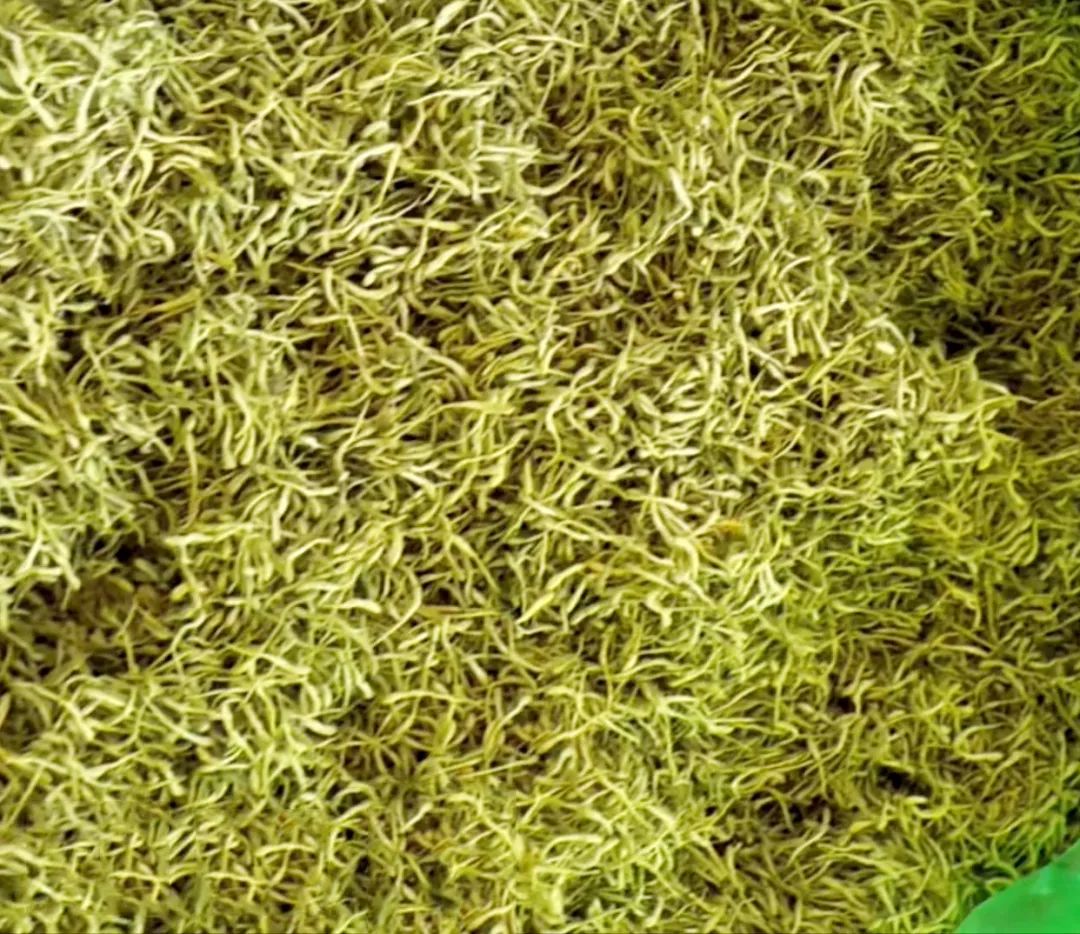

Based on observations of the growth and development cycle of Ren Dong, cuttings generally begin to flower in the second year after planting and can produce marketable products by the third year. The growth cycle from spring budding to the following spring budding can be divided into ten developmental stages: budding period, spring shoot growth period, spring flowering period (first flowering), early summer new shoot growth period, early summer flowering period (second flowering), late summer new shoot growth period, late summer flowering period (third flowering), autumn shoot growth period, autumn flowering period (fourth flowering), and pre-winter and wintering period.
1. Growth Habits of the Plant
When the average daily temperature reaches above 4°C, Ren Dong begins to bud. At this time, with the rising temperature, effective photosynthetic radiation and increasing daylight hours, new shoots enter a vigorous growth phase and flower bud differentiation. By mid-May, when the average daily temperature reaches 23°C and the daylight hours are 6.94 hours, the first flowering period begins. After nearly four months of shoot growth and flowering, by late September, due to the drop in temperature, new shoots and flower buds will no longer form. In late November, as temperatures drop below 0°C, it enters the wintering period until the following spring when new shoots begin to sprout, entering the next growth season.
2. Root Growth Habits
Ren Dong has a well-developed root system with many fine roots and strong rooting ability. The roots grow fastest from early April to late August. The distribution of the root system in the soil varies depending on the variety, age, soil conditions, and cultivation measures. The root system is mainly concentrated in the top 30cm of soil, with two peak growth periods in a year: one in April-May and another in July-September, with root growth ceasing in November.
3. Bud Growth Habits
Buds typically arise in the leaf axils of new shoots or at the nodes of perennial stems, mostly as mixed buds with precocious characteristics. Except for overwintering buds that do not sprout in the same year due to low temperatures, generally, buds can sprout multiple times each year. Ren Dong enters the budding phase when the average daily temperature is around 5°C, with two peak budding periods each year: the first in early to mid-March and the second in early to mid-October. Late autumn budding is more common than leaf unfolding before winter, and most can continue to grow and form fruiting branches after the temperature rises the following year. In early winter and early spring, multiple adventitious buds often form at the base of the main trunk and at the branching points of the main branches or at the nodes of perennial branches, which often develop into vigorous or fruiting branches. These should be removed in a timely manner before the budding growth in early spring.
4. Branch Growth Habits
Each budding of Ren Dong has a genetic basis for developing into fruiting branches and has the potential for flowering. However, due to differences in nutritional status and management levels, they may develop into fruiting branches, vegetative branches, vigorous branches, or leafy clusters. One-year-old tender branches are green or purplish-brown, while perennial branches are grayish-white, and old bark peels off in layers.
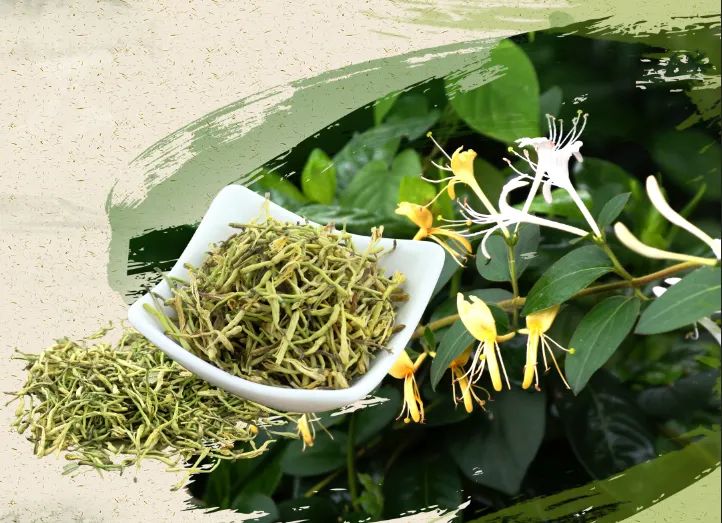
5. Stem Growth Habits
The main trunk and old perennial branches are referred to as stems, which can be divided into main stems and lateral stems, both of which are gray or grayish-white. The bark peels off in long strips, and new bark emerges as the old bark gradually tears off. The old bark peels off once a year. The main and lateral stems form the skeleton of the above-ground part, supporting the plant and transporting water and nutrients, and care should be taken to cultivate the branch framework early on. Generally, in deep, fertile sandy loam, the main trunk can increase in diameter by about 1cm each year during the first five years after planting.
6. Flowering Habits
Throughout the year, Ren Dong exhibits multiple shoot and flowering habits. The flowering period lasts from mid-May to late September, spanning over four months. Generally, the first flowering occurs in mid-May, ending in early June, with a large number of flowers concentrated during this period. Afterward, only small numbers of flower buds are formed when strong branches produce secondary shoots, and the flowering period is irregular. If managed well through artificial pruning, reasonable fertilization, and irrigation control, it can flower 3-4 times more concentratedly.


